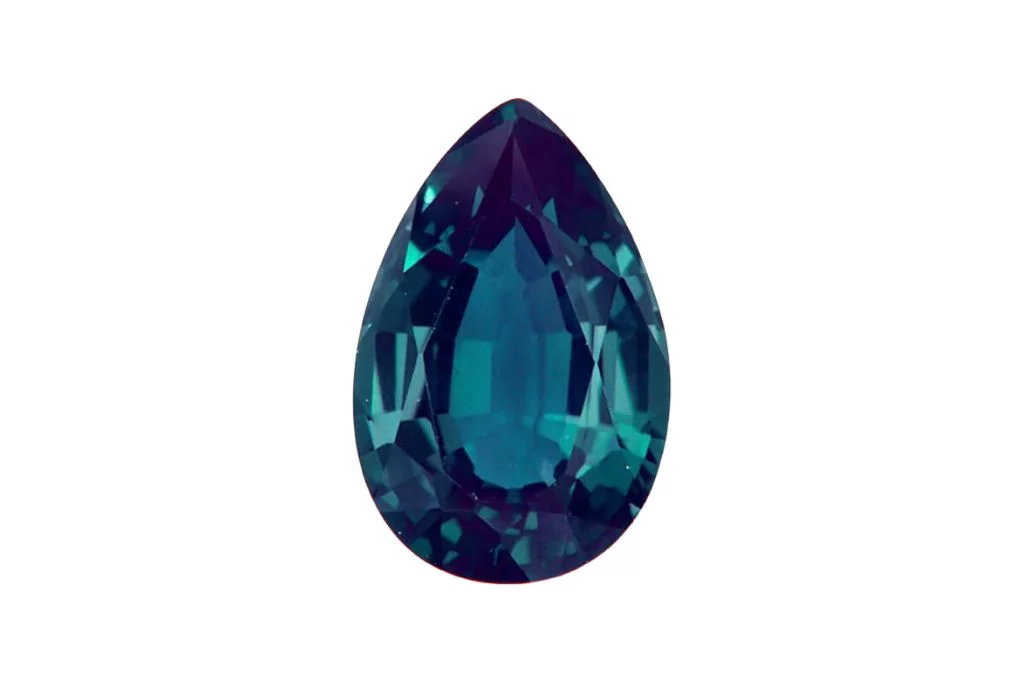Color Changes of Blue Alexandrite
Blue Alexandrite is renowned for its remarkable color-changing properties. In daylight or fluorescent light, it typically displays a beautiful blue to blue-green hue. However, under incandescent light or candlelight, it transforms into a stunning purple to purplish-red color. This dramatic shift in appearance is what sets Blue Alexandrite apart from other gemstones and makes it highly prized among collectors and jewelry enthusiasts.
Crystal Structure and Composition
Blue Alexandrite belongs to the chrysoberyl family of minerals. Its crystal structure is orthorhombic, characterized by well-formed, tabular to prismatic crystals. The gemstone is composed primarily of beryllium aluminate (BeAl2O4) with trace amounts of chromium, which is responsible for its color-changing properties. This unique composition contributes to its durability, with a hardness of 8.5 on the Mohs scale, making it suitable for everyday wear in jewelry.
Physical Characteristics
One of the most notable physical characteristics of Blue Alexandrite is its pleochroism, meaning it can display different colors when viewed from different angles. This phenomenon adds depth and complexity to its appearance. The gemstone also exhibits a vitreous to subadamantine luster, giving it a bright, reflective surface. Blue Alexandrite crystals are often found as twins, with a distinctive V-shaped or hexagonal pattern, further enhancing their visual appeal.
Rarity and Value
Blue Alexandrite is exceptionally rare, particularly in larger sizes and with pronounced color change. Natural specimens are primarily sourced from Brazil, Sri Lanka, and East Africa. Due to its scarcity and unique properties, Blue Alexandrite is one of the most valuable colored gemstones, often commanding higher prices than diamonds of comparable size. The most prized specimens exhibit a strong color change and have few inclusions, resulting in excellent clarity.
Historical and Cultural Significance of Blue Alexandrite
Blue Alexandrite, a rare variety of the mineral chrysoberyl, has captivated gemstone enthusiasts since its discovery in the Ural Mountains of Russia in the 1830s. Named after Tsar Alexander II, this gem quickly became associated with Russian royalty and nobility. Its remarkable color-changing properties, shifting from bluish-green in daylight to purplish-red under incandescent light, made it highly prized and sought after.
Metaphysical Associations
In the realm of crystal healing and metaphysics, Blue Alexandrite is believed to possess powerful energetic properties. It is often associated with intuition, creativity, and personal growth. Many practitioners claim that this gemstone can help balance emotions, enhance self-esteem, and promote spiritual awakening. Blue Alexandrite is also thought to strengthen one’s connection to the higher self and facilitate communication with spiritual guides.
Common Uses and Benefits
Blue Alexandrite finds applications in both traditional and modern contexts. In jewelry, it is highly valued for its rarity and color-changing properties, often set in rings, pendants, and earrings. Metaphysical practitioners use it in meditation, crystal grids, and energy healing sessions. Some believe that wearing or carrying Blue Alexandrite can provide benefits such as improved decision-making abilities, increased luck, and enhanced mental clarity. In alternative medicine, it is sometimes used to address issues related to the nervous system and to promote overall well-being.
Modern Applications
In recent years, Blue Alexandrite has gained popularity in the field of color therapy. Its unique color-changing properties are believed to stimulate different aspects of the mind and body, depending on the lighting conditions. Some holistic healers incorporate Blue Alexandrite into their practices, using it to help clients overcome emotional obstacles and tap into their inner wisdom. Additionally, the gemstone has found its way into luxury spa treatments, where it is used in facial rollers and massage stones for its purported skin-rejuvenating properties.

